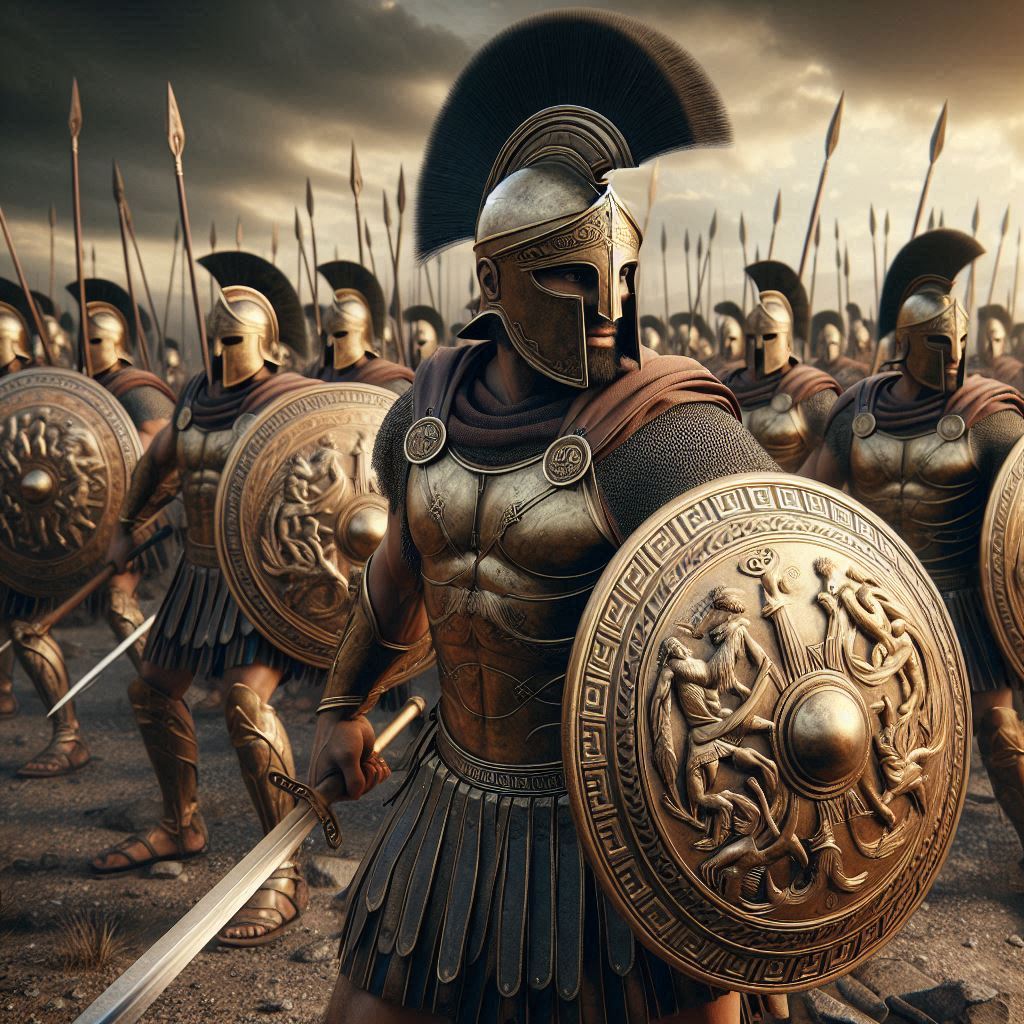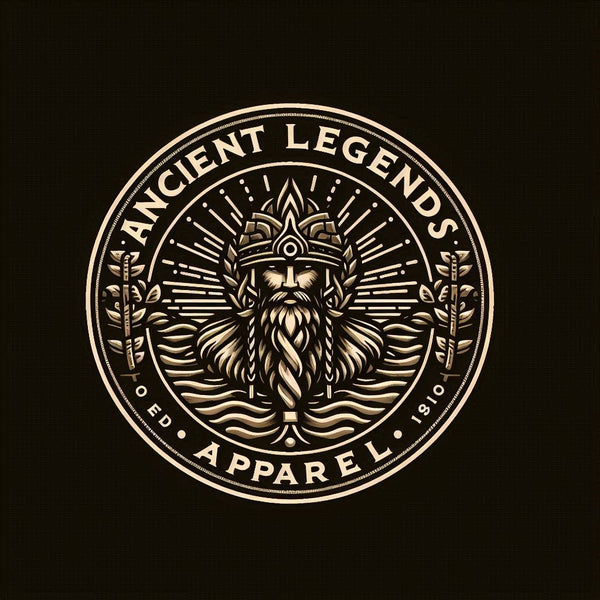
Ancient Greek Armor and War Tactics: How Warriors Dressed for Battle
Karl FinnbogasonShare
The warriors of Ancient Greece were among the most formidable fighters of the ancient world, mastering strategy, discipline, and warfare techniques that influenced military tactics for centuries. Their strength in battle was not only due to their skill but also to their highly developed armor and weaponry.
From the mighty hoplites to the elite Spartan warriors, Greek soldiers donned intricate armor designed for both protection and mobility. Their battlefield tactics, particularly the famous phalanx formation, made them nearly unstoppable in direct combat.
This article explores the armor, weapons, and war tactics used by Greek warriors, delving into how they dressed for battle and fought with tactical precision.
The Hoplite: The Backbone of Greek Warfare
The most common and elite soldier of Ancient Greece was the hoplite, a heavily armed foot soldier who formed the core of Greek armies. These warriors were primarily citizen-soldiers from city-states like Athens, Sparta, and Corinth, trained to fight in tightly organized units.
Hoplites were equipped with armor and weapons designed for durability and effectiveness in battle.
The Hoplite's Armor: Defensive and Practical
Greek warriors wore a combination of metal and leather armor that provided protection without sacrificing too much mobility.
- Corinthian Helmet – Made of bronze, this iconic helmet covered the entire head, leaving only narrow eye slits and a small mouth opening. Some had horsehair crests to intimidate opponents and display rank.
- Cuirass (Body Armor) – The linothorax, a layered linen or leather cuirass, was commonly worn by hoplites, though wealthier soldiers could afford bronze breastplates.
- Greaves (Leg Guards) – Made of bronze or leather, these protected the shins and knees.
- Leather Sandals or Boots – Light footwear ensured ease of movement during long marches and battles.
- Cloak (Chlamys) – A short cloak worn for additional warmth when necessary.
Weapons of Greek Warriors: Tools of War
Greek warriors wielded an arsenal of spears, swords, and shields, each designed for a specific purpose in battle.
- Dory (Spear) – The hoplite's primary weapon, measuring about 7-9 feet long with a leaf-shaped iron tip and a bronze butt-spike.
- Xiphos (Short Sword) – A double-edged sword, about 18-24 inches long, used in close combat once the spear was broken or discarded.
- Kopis (Curved Sword) – A one-edged blade used by cavalry for slashing attacks.
- Aspis (Hoplite Shield) – A large, round shield made of wood and bronze, approximately 3 feet in diameter, essential for defense in the phalanx formation.
The Phalanx Formation: The Greek Shield Wall
The Greeks were masters of tactical warfare, with the phalanx formation being their most famous strategy. This tightly packed, rectangular formation was nearly impenetrable when executed correctly.
How the Phalanx Worked:
- Hoplites stood shoulder to shoulder, their shields overlapping to form a solid wall of defense.
- The front rank held their dory spears at chest level, aiming at enemies approaching the line.
- Soldiers in the second row raised their spears higher, attacking over the heads of those in front.
- The rear ranks pushed forward, reinforcing the line and maintaining the formation’s integrity.
- This strategy allowed Greek armies to hold their ground and advance in unison, making them difficult to break apart.
Strengths of the Phalanx Formation:
- High defensive capability – The overlapping shields protected the entire unit.
- Disciplined teamwork – Success depended on cooperation and coordination.
- Effective in frontal assaults – The compact structure enabled warriors to push through enemy lines.
Weaknesses of the Phalanx Formation:
- Vulnerable on the flanks – If attacked from the sides, the formation could collapse.
- Less effective on rough terrain – The phalanx required flat, open ground to function properly.
- Limited mobility – The tightly packed soldiers could not react quickly to sudden changes.
The Spartans: The Ultimate Greek Warriors
No discussion of Greek warfare is complete without mentioning the Spartans, the most feared warriors of the ancient world. Trained from childhood in the agoge system, Spartan soldiers lived a life of discipline, endurance, and unwavering loyalty to their city-state.
Spartan Armor and Weapons:
- Similar to other Greek hoplites, but often of superior quality.
- Spartans favored red cloaks, symbolizing strength and resilience.
- Used shorter swords (xiphos) for close combat, showing their confidence in close-quarters fighting.
Spartan War Tactics:
- Relied on the phalanx, but with even greater discipline.
- Fearless in battle, trained to never retreat unless commanded.
- Psychological warfare – Spartans used war songs, battle cries, and fearsome reputations to intimidate enemies.
Naval Warfare: The Power of Greek Triremes
While land battles were crucial, naval warfare played an essential role in Greek military dominance. The Athenian navy was particularly famous for its triremes, swift warships designed for speed and maneuverability.
Features of Greek Triremes:
- Three rows of oars (hence the name “trireme”) for maximum speed.
- Rammed enemy ships with reinforced bronze bows.
- Allowed for quick ambushes and strategic naval blockades.
Famous Naval Battles:
- Battle of Salamis (480 BCE) – The Greeks, led by Themistocles, used triremes to defeat the larger Persian fleet.
Greek Military Innovations and Their Legacy
Greek war tactics and armor influenced future civilizations, from the Romans to modern military strategy.
- The Phalanx Inspired Roman Legions – The Romans modified Greek formations into their manipular legion system.
- Greek Naval Strategy Set the Foundation for Future Fleets – The tactics used in Salamis were studied for centuries.
- Armor and Shield Designs Influenced Medieval Knights – Elements of Greek armor carried into later European warfare.
- Discipline and Training Methods Inspired Modern Military Training – Spartan rigor remains a symbol of elite military training.
The Enduring Influence of Greek Warriors
The warriors of Ancient Greece set the standard for military excellence, combining advanced armor, strategic formations, and disciplined training to dominate the battlefield.
Their legendary tactics, especially the phalanx and naval warfare, influenced countless armies throughout history. Today, their armor, weapons, and battle strategies remain symbols of strength, unity, and resilience, continuing to inspire movies, literature, video games, and historical studies.
From the fearless Spartans to the disciplined Athenian hoplites, Greek warriors left an indelible mark on military history, proving that war is not just about weapons, but about strategy, discipline, and the spirit of the soldier.
